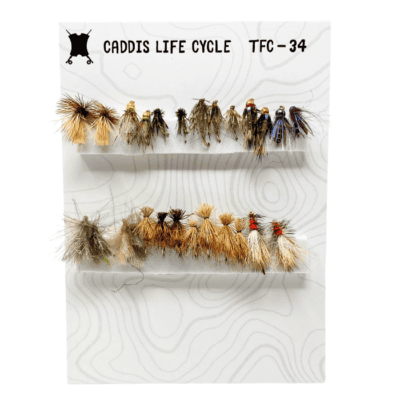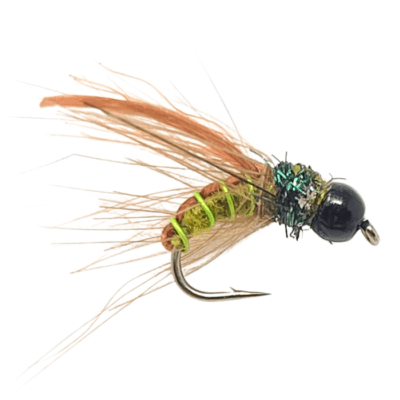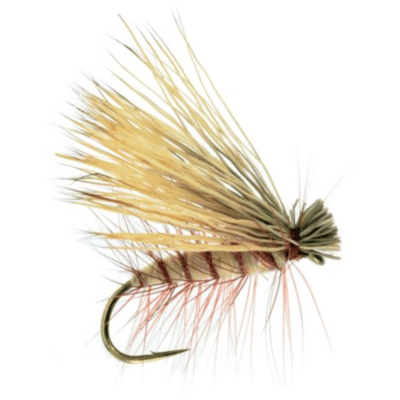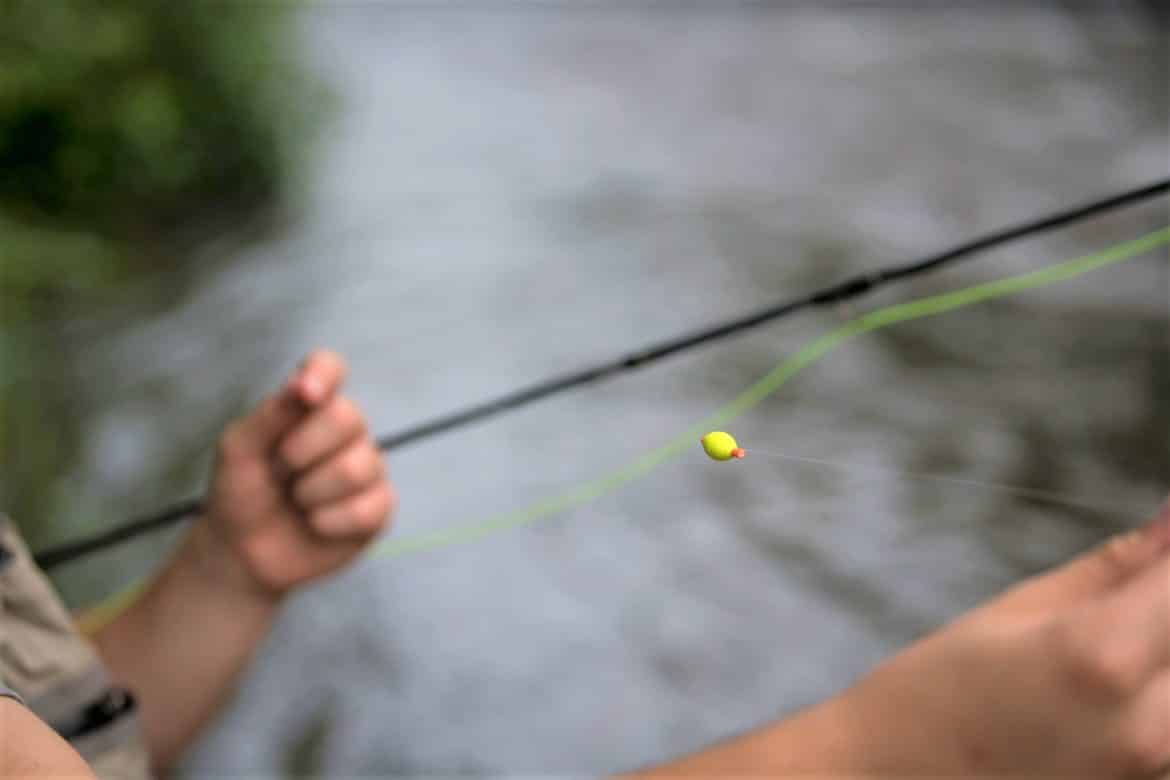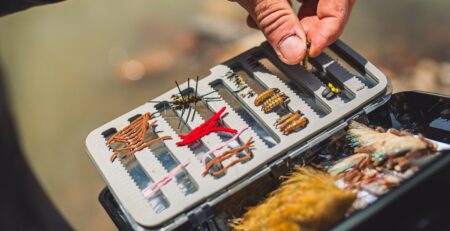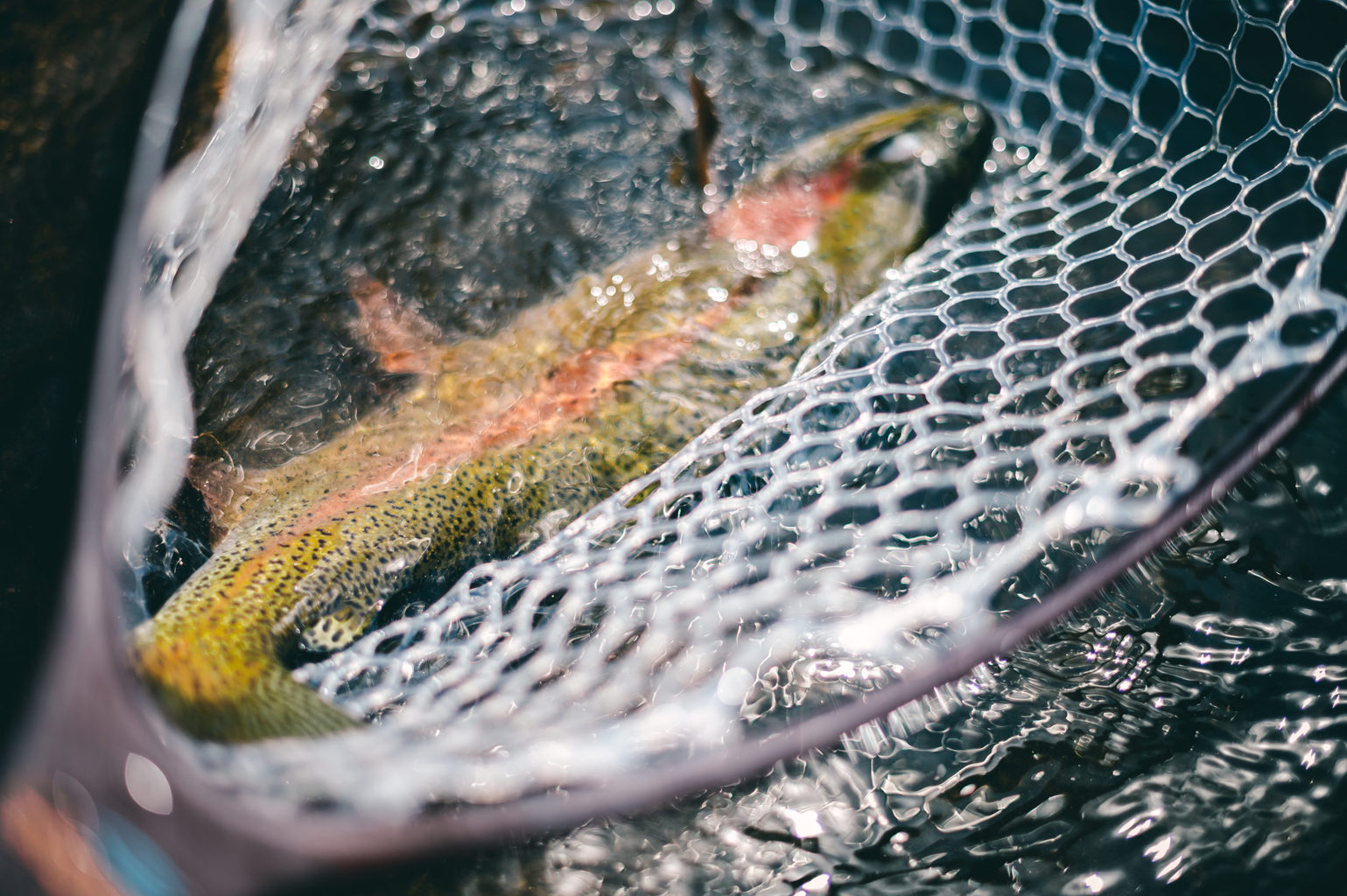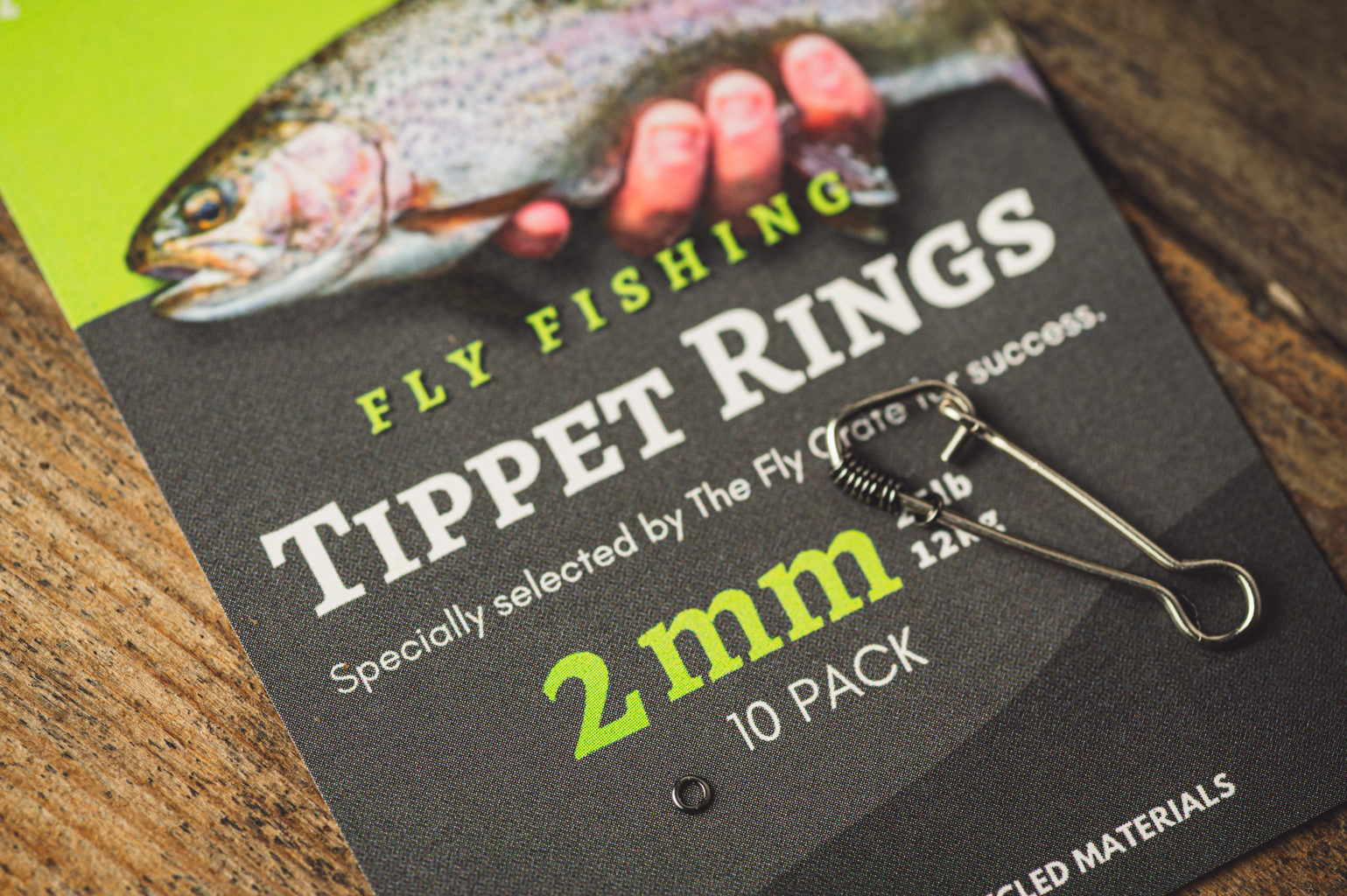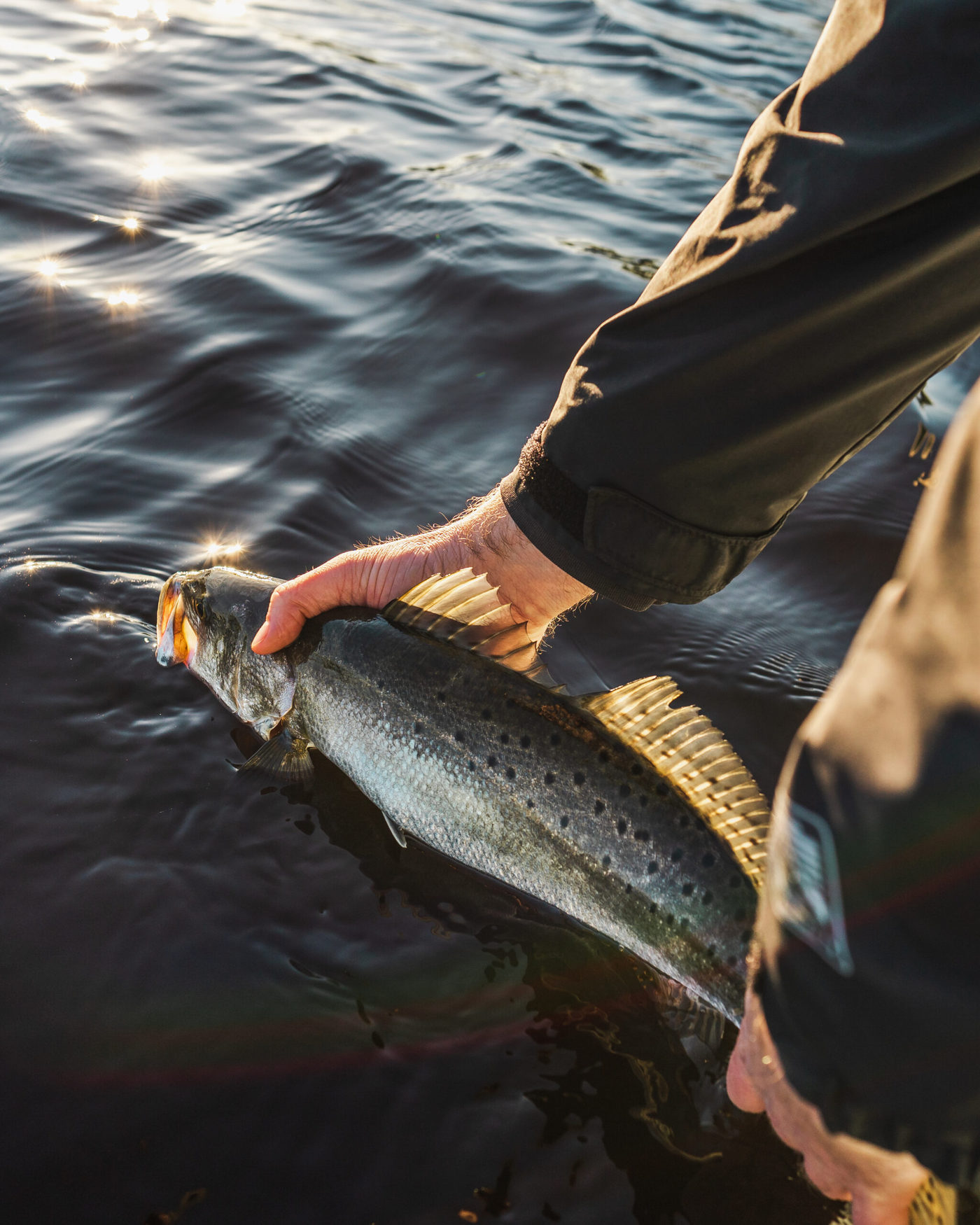How to Fly Fish Caddis Flies
Clients often me ask on guided fishing trips, “What is the most important hatch or insect for trout fishing?” Mayflies and stoneflies, especially the big ones like green drakes, brown drakes, salmon flies, and golden stones are the ‘coolest’ bugs on the water. They are often a fly fisherman’s favorite hatches due to their massive size.
There is much focus on these larger bugs, and as a result, other important aquatic insects are overlooked. Of all the bugs in and on the water, caddis flies are the most prolific insects. They are literally everywhere! They are important to both trout and fly fishermen. We are going to cover what exactly caddis flies are, why they are important to anglers and fish, and how to capitalize on a caddis hatch. We’re going to make this as simple and straightforward as possible.
Table of contents
What does a caddis imitate?
If you have been fly fishing or camping near a river, then you have seen lots of small moth like creatures in the bushes next to the river or gathered around your lantern in swarms. You have officially been introduced to caddis flies.
Caddis flies, part of the order Trichopetera are a group of insects with over 14,000 different species. Don’t worry, we are going to cover only a few of the important ones that you need to know for fly fishing. If you want to really nerd out on caddis flies, then I suggest picking up the book The Bug Book by Paul Weamer. It’s a great introduction to entomology.
The caddis hatch and lifecycle is different then a mayflies life cycle. Unlike mayflies, caddis go through a complete metamorphosis. Their lifecycle includes: egg, pupae, larvae, and adult. They are unique in that the vast majority of caddis larvae are case builders. This means that the majority, but not all larvae will build a case out of different types of material to live in.

3 Different Types of Caddis
Net Spinners – Net spinners are very similar to spiders. They create a small net made of silk that filters and catches food from flowing water. They feed off the nutrients caught in the net. These are predaceous larvae
Case Builders – These caddis create a shelter out of sticks, rocks, and even leaf material. This shelter is for protection. As these caddis larva move over the surface of the rock it is attached to, it scraps algae of the surface as a food source.
Free Living – Free living caddis larvae don’t build a case for protection and they are predaceous. Most of the time they are found in cold oxygenated places with good water clarity.
A caddis hatch can happen almost anywhere: lakes, streams, dirty water, and clean water. Caddis live in a variety of water clarity and types depending on the species. For fly anglers, the majority of the time case building caddis or net spinning caddis are found attached to boulders, underwater tree limbs, and detritus.
Why are caddisflies important?
A caddis hatch is important to both fly anglers and fish because there are so many caddis in the water they make up a majority of the diet of both small and large trout. Statistically, there are far more caddis flies in the water than there are mayflies. It’s simple, they are an easy meal for feeding fish. When the sexy mayfly and stone fly hatches aren’t hatching, then caddis flies will fill the void in their diet. Understanding this simple fact allows fly fishers to show up to almost any trout river in North America and have the confidence to fish a fly pattern that they know fish will be eating.
In addition, they are a hardier insect than a mayfly. They can live in almost all types of water. This means that if you are fly fishing for trout in the lower 48 states, then there is a very good chance that the trout you are chasing are eating caddis flies.
Not only are they widespread, but they also do what is called behavioral drift. This is nature’s way of ensuring that insects are not mating with their brothers, sisters, or parents. Caddis flies will detach from the rock that they are living on, and drift for long periods of time in the current. This dispersion of individuals to different areas of the river ensures genetic diversity. It also allows fish an easy meal. Behavioral drift happens throughout the day. While mayfly nymphs and stoneflies are hiding under rocks, caddis is giving discerning anglers ample opportunity at eager trout.

What does a caddis look like?
Remember, if you are overwhelmed by fly fishing entomology and insects, don’t be. Most anglers don’t know scientific names of insects and neither do the fish! Focus on size, shape/profile, and color. These three characteristics will get you in the strike zone.
A caddis hatch can produce bugs ranging in sizes from #12-#20. All caddis have wings that lay down in a pup tent like formation. They are easily mistaken for moths. The color variation is wide too. The larvae can range in color from bright green, dark olive, beige, brown, black, and orange. The adults are typically brown, black, tan, light olive, dark olive, or orange.

What time of year do caddis flies hatch?
On many rivers, caddis hatches start to happen in the first few weeks of April to mid April. Then continue through October. The first major hatch is the mother’s day caddis hatch in May. This is a very famous hatch and often coincides with blue wing olive hatches producing early sessions of epic dry fly action and some of the best fishing of the season.
These early season caddis hatches need a water temperature of 54 degrees. This means that if you are seeing caddis in the first week of spring, then you know that salmon flies and stoneflies will be moving around as well. They need a water temperature of 55 degrees. For local anglers, these are clues that winter is over. The fly fishing is about to get really good and runoff is right around the corner.

Do caddis hatch in the morning or evening?
A caddis hatch can happen any time of the day. Their lifecycle is dependent on water temperature. There are many factors that affect a river’s water temperature. In early spring, the water is frigid from runoff, so hatches need more sun to develop. The Mother’s Day caddis hatch will most likely happen in the evening. The water needs longer periods of exposure to the sun to reach the correct temperature.
Rain can affect the river’s temperature as well as upstream tributaries. Be ready for the spring hatch to forward or backward depending on factors other than sunshine. If you are fishing a tailwater fishery, then water flows will affect hatches. Hatches always start downstream and move upriver. The coldest water is the water closest to the dam. If you are chasing the hatch, start downstream and work your way back to the dam. The hatch will move daily.
As summertime progresses, productive fishing can happen any time of the day. Hatch cycles are accelerated as water temps move higher, rainstorms occur, and the presence of cloud cover. The insect lifecycle can move from evening to mid-day, to even morning depending on a number of factors.
Is a caddis fly a dry fly?
A caddis is a type of aquatic insect that goes through a full metamorphosis: Egg, larvae, pupa, and finally adult. During the metamorphosis, long cylindrical pupae trap air bubbles in their shuck and float or swim to the surface of the water. They emerge at the surface of the river and become adults with fully formed wings almost instantly. This all happens within the blink of an eye, which is why many trout strike suddenly. Adults fly to the river’s bushes to find a female caddisfly to mate with. The female caddis then returns to the surface of the river to lay eggs.
It is during the last two phases of the caddis life cycle that fly fishers have the opportunity to fish dry flies. A dry fly is a fly that floats on the water’s surface that targets rising fish. Many times at the beginning of the caddis hatch, you will see smaller fish making splashy rises. These fish usually swim up from the bottom of the river and come in at high speed. Larger trout tend to have subtle rises, porpoising just below the river’s surface.

How do you fish a caddis hatch?
How to fish a caddis hatch depends on what hatch we are fishing. Remember there are many species of caddis flies. These are some of the most popular hatches in North America.
Mothers Day Caddis Hatch or Grannom Hatch
When: The Mother’s day caddis hatch, or the Grannom hatch as they are commonly known on the East coast, occurs during the first weeks of May or late May. This largely depends on where you live. Whether you are on the Madison river in Montana, or the Colorado River near Glenwood Springs, Mother’s day caddis are probably hatching near you.
Appearance: Mother’s day caddis are darker in color and range in size from #14 to #16
The Hatch: The Mother’s day caddis hatch is the first opportunity for fly fishers to fish a dry fly. Water temperatures reach 54 degrees and this hatch turns on. Mother’s day caddis are case building caddis flies. They stay in their case until the pupae migrate out of their case. This starts the process of their emergence to the rivers surface.

Once Mother’s Day caddis reach the surface of the river and break through the meniscus of the water. They spend long periods of time drying their wings in preparation for flight. Capitalize on this opportunity to throw dry flies. Casting a two fly dry fly rig is a lot of fun. Keep both emerger and true dry fly patterns in your fly boxes. An all around standard two fly is an elk hair caddis as your point fly. Then add 18″to 24″ of tippet and fish Fontaine’s sparkle pupa or x caddis emergers in sizes 14 to 16. Flies can be fished with a dead drift. During the grannom hatch, there can be so many bugs on the water that it can help to twitch your caddis flies, or size up to a larger fly that stands out.

Spotted Sedge
When: As water temperatures start to increase and the Mother’s Day caddis hatch starts to wane, the spotted sedge plays an important role in summer hatches. Spotted sedges hatch from June to August. The strongest part of the hatch occurs in the last week of June or the first week of July.
Appearance: The spotted sedge adult is brown, tan or a light rusty brown color with spots on their legs and wings.
The Hatch: The spotted sedge is a net spinning caddis that clings to rocks and builds nets to catch food. They can hatch at any point in the day. They usually hatch in the evening. While other caddis flies will hop up and down on the surface of the river, the spotted sedge is different. The Female spotted sedge caddis will return to the river in the evening and dive underneath the water’s surface to deposit her eggs. Then return to the surface of the river and die on top of the water. These periods of emergence and egg laying are your best chance to fish emerger patterns, dry fly patterns, or swing traditional wet flies. Nymphing or swinging traditional dry fly patterns such as deer hair or elk hair caddis is a productive tactic. In addition, swinging a deep sparkle pupa vertically in the water column is effective too. You can do this by stopping your rod and allowing the line to straighten, which will pull the fly up to the surface. Dry flies and emerger patterns like a parachute caddis or unweighted sparkle emerger that sit low in the water are effective flies to have in your fly boxes.

October Caddis
When: October caddis typically hatch in the fall. That being said, they can hatch in mid and late summer too depending on your fishery. On Idaho’s South Fork of the snake we routinely see them in late July and August.
Appearance: These are large caddis that can grow to be an inch and a quarter in length. Large trout like large meals. They are a rusty brown or orange color. Flies in size #8 to #14 should be considered.
The Hatch: October Caddis are an entirely different animal than a spotted sedge or mother’s day hatch. Unlike a mother’s day caddis hatch, which can blanket a river, October caddis hatch more sparsely. Their behavior is more like a stone fly.
October Caddis are omnivore case builders. They will swim or crawl to banks and shallow areas of the river to hatch. Male and female caddis join abdomens to mate. The female will return the surface of the river to deposit her eggs. At this point you will usually see them running across the surface off the water creating a large wake behind them. This is an anglers chance to throw larger orange stimulators or elk hair caddis patterns and twitch or skate them across the water’s surface. This can make for some of the best surface action of the fall.
Recommended Reading: How to Catch Trout on Caddis Flies

What flies imitate caddis?
Whether you are fishing a Mother’s Day hatch or an October caddis hatch, anglers should always have some go-to caddis flies in their fly boxes. Always choose what you have confidence in. That is different for everybody. Here are our favorite caddis flies that we wouldn’t hit the river without.
Elk Hair Caddis: We have touched on this in other articles, but an elk hair caddis can be fished in many different situations and for different hatches. It can be used as a nymph, for dry fly fishing, or trimmed for use as an emerger pattern, It can also be used to cover small stonefly hatches, mayfly hatches and of course caddis hatches. I would have many different sizes in black, olive brown, and tan.
Bead Head Hare Ear Soft Hackle: The bead head hare’s ear soft hackle is an excellent pattern that gets down deep. It can be used to imitate diving egg laying caddis or emerging pupa swimming toward the surface.
Missing Link Caddis: The missing link caddis is a pattern that sits low in the water and can imitate both crippled caddis or an emerging or crippled mayfly. Crippled insects become stuck in the meniscus are easy prey for trout. This is a great fly to switch to after you have already caught several trout on the same pattern and the fish become picky.
Stimulator: It is hard to argue with the effectiveness of a traditional stimulator pattern. Tied in all sizes and in the colors tan, yellow, or orange it allows you to cover small caddis flies, October caddis and even salmon flies, golden stones, and smaller yellow sallies.
Barbless CDC Caddis Emerger: A barbless CDC caddis emerger is one of my favorite patterns when rising trout are porpoising in the flats or on a riffle. CDC is a buggy material. This pattern also transcends both mayfly and caddis hatches. It hangs low in the water. It will give you the tight lines that you desire when the fishing gets tough. This pattern is super effective for trout focused on the low hanging fruit of the emerger stage of the caddis lifecycle.
Fly Fishing Made Easy 👍
Our Quarterly Fly Club ships 1,000’s of flies to anglers all across the United States. Receive curated fly assortments selected for the season with in-depth articles on how to fish them. Great for beginners to learn and for intermediates to discover new flies.


